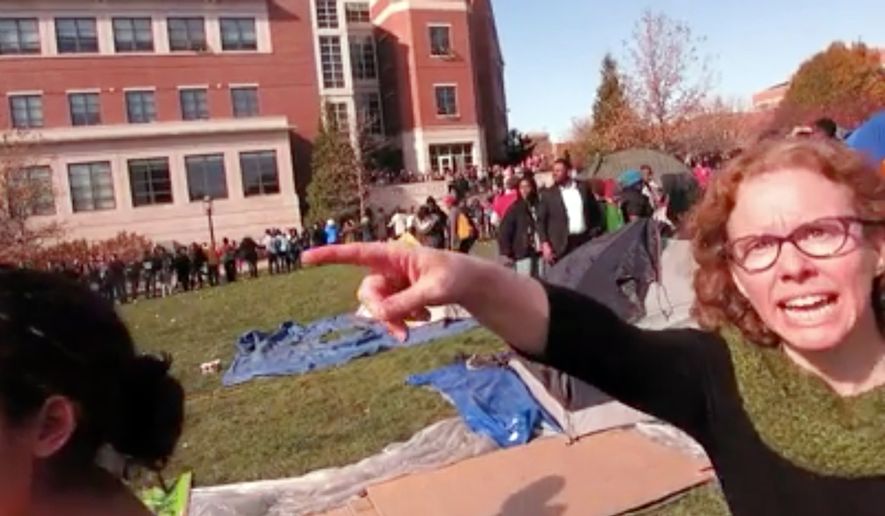A new study confirms what even the most casual observer of higher education has long known — that conservative professors are vastly outnumbered by liberal ones — but it also shows that the problem is getting worse.
Published in Econ Journal Watch last month, the study looks at faculty voter registration at 40 leading universities and finds that, out of 7,243 professors, Democrats outnumber Republicans 3,623 to 314, or by a ratio of 11 1/2 to 1.
The study comes after a tumultuous few years at American colleges and universities, marked by campus race protests, the disinvitation of conservative speakers and the popularization of phrases such as “trigger warning” and “safe space.”
Out of five departments analyzed by the authors, the field friendliest to conservative scholars is economics, where there are only 4.5 liberal professors for every conservative.
Conversely, history is by far the least conservative-friendly department, where liberals outnumber conservatives by a 33 1/2-to-1 ratio.
This stands is in stark contrast to a 1968 study that put the Democrat-to-Republican contrast in history departments at 2.7 to 1, the study points out. Even reports from as recent as 2004 have estimated liberals outnumber conservatives in the field by a ratio between 9 to 1 and 15 to 1.
The authors of the analysis — Brooklyn College business professor Mitchell Langbert, private sector economist Anthony J. Quain and George Mason University economist Daniel B. Klein — speculate that the rapidly growing disparity is due in part to the rise of academic subcategories, such as the histories of gender, race and class, where a liberal orientation is the foundation for subsequent research.
Kim R. Holmes, a distinguished fellow at The Heritage Foundation, said the ascendance of multiculturalism in the humanities makes it difficult for conservatives to find work teaching.
“If you’re going to have a Gender Studies Department, or something like that, the progressive assumptions are built into the very idea of the department, so you’re not going to hire any conservative professors,” said Mr. Holmes, who is the author of “The Closing of the Liberal Mind.” “Because of this, the imbalance has proliferated.”
The disparity is highest at the most prestigious universities, the study finds. Pennsylvania State University, for instance, has a comparatively balanced faculty ratio of 6 to 1, while Ohio State University enjoys even closer ideological parity at 3.2 to 1. But a pair of Ivy League universities, Columbia and Princeton, both weigh in at 30 to 1.
The university with the most even ratio examined in the report is Pepperdine University, which has a reputation for being a conservative school but still has 1.2 Democrats for every Republican on the faculty.
David L. Warren, president of the National Association of Independent Colleges and Universities, downplayed the report’s findings.
“Well, I don’t know that there’s a whole lot of news here,” Mr. Warren said. “Since the ’60s, and especially given political circumstances — the war, Watergate and Nixon’s circumstances — it’s pretty evident that college faculty and students became more Democratic.”
While he said he would prefer more intellectually diverse faculties at the schools examined in the report, Mr. Warren said they do not represent the higher education landscape as a whole. He said small, faith-based colleges are just as likely to create campus echo chambers as their Ivy League counterparts.
“Both sides of the political spectrum have created departments that are hostile and antithetical to the other political view,” Mr. Warren said. “I think it’s often missed that that happens at a number of campuses that are not listed here, which, by the way, is where the vast majority of students are. The students listed in this group are probably less than 5 percent of all the students in the country.”
The study also breaks down the ratio of Democratic-to-Republican faculty by age.
While there are 10 Democrats for every Republican among professors over the age of 65, the ratio balloons to 22.7 to 1 among scholars under the age of 36, indicating the ideological disparity could continue to grow as more senior professors are pushed out and replaced by a new generation of scholars.
Mr. Warren also minimized this aspect of the report, saying liberals tend to become more conservative as they grow older. Furthermore, he said fields not examined in this report, including business, engineering and the natural sciences, tend to skew more conservative than the humanities and social sciences.
But Mr. Holmes said increasing intellectual homogeneity in academia does not bode well for the health of the American republic, pointing to the Founders’ belief in the necessity of a virtuous and well-educated citizenry.
“If the culture at large neither cares about morality anymore and, on top of that, the education is being cheapened, it’s no longer about trying to teach people to think critically but about trying to indoctrinate them to a certain point of view,” Mr. Holmes said. “The American public over time is going to decline in the ability to be self-governing, and, ultimately, that’s a threat to democracy.”
• Bradford Richardson can be reached at brichardson@washingtontimes.com.




Please read our comment policy before commenting.